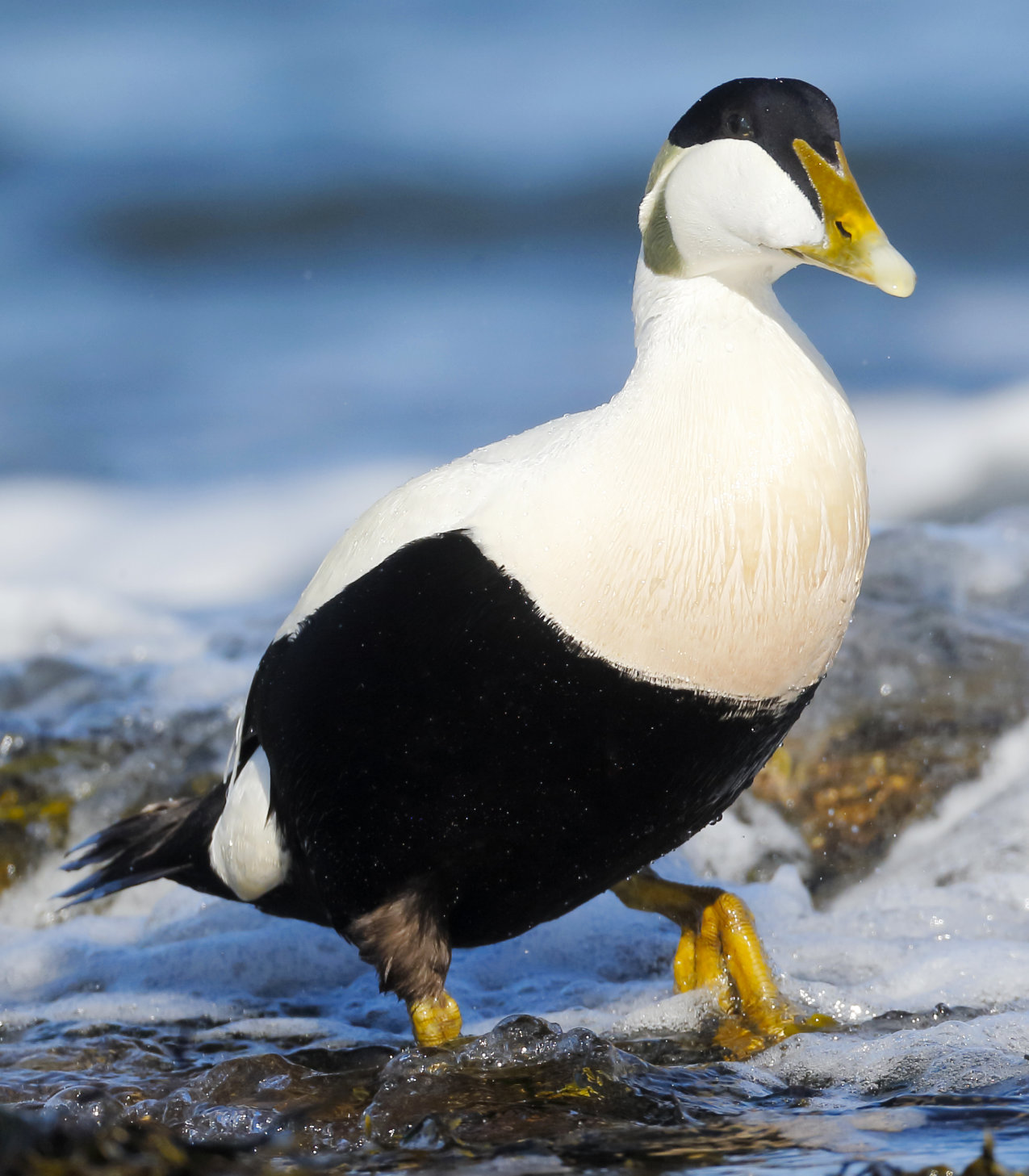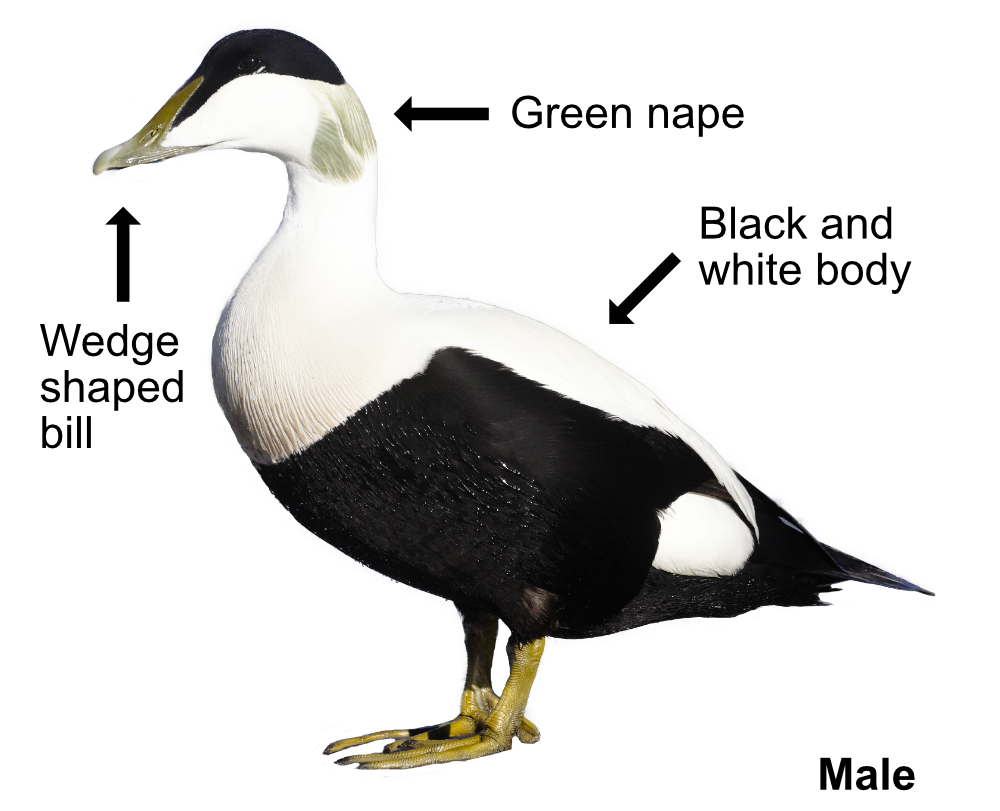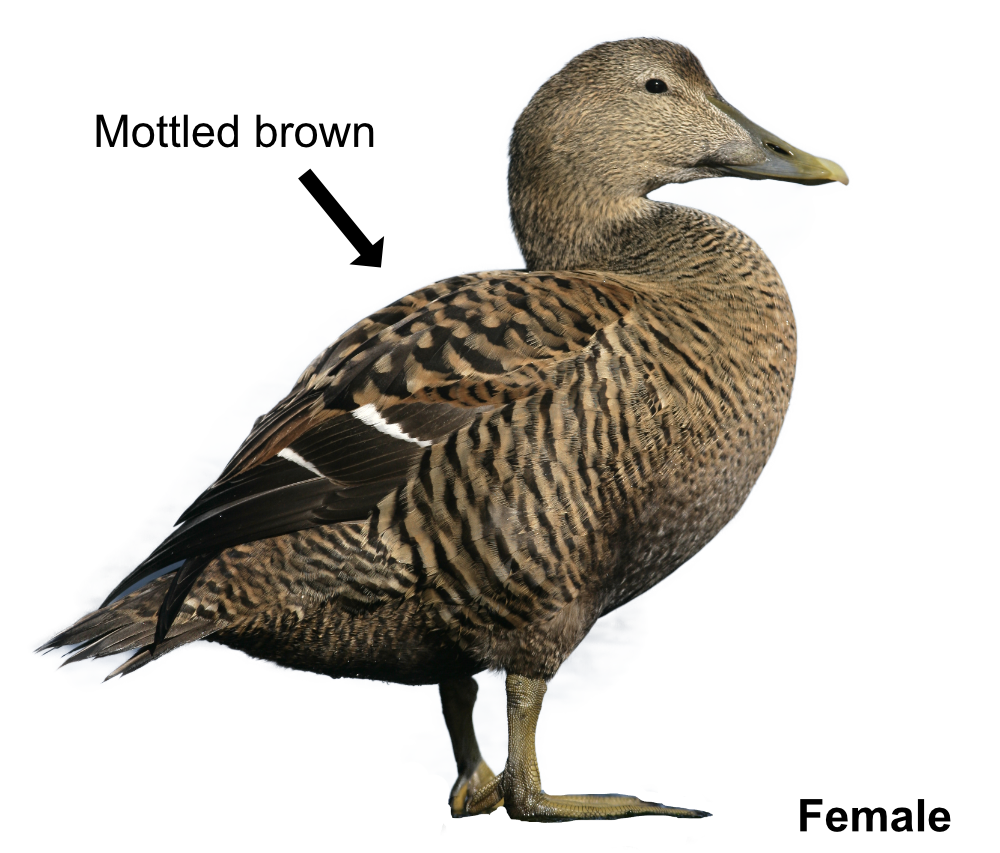
The Eider duck is where Eiderdown bed covers came from. Their insulating feathers used to be collected once they had finished nesting. It is Britain's heaviest and fastest flying duck, reaching speeds of 70mph! The Eider is a marine diving duck that breeds around the rocky coasts of northern Europe and winters only slightly further south. It spends most of its life at sea, usually seen in large floating flocks.
Eider ducks are the size of Mallards. They have fat bodies, short necks, and large wedge-shaped 'Roman nose' bills. The male is black and white with a lime green nape. The female is a darker mottled brown. The youngsters resemble mum and take 4 years to reach their full adult plumage. In flight, Eiders look heavy with drooping heads and they tend to fly low over the water in single lines. The male has a visible black behind and a white front. They are mainly silent except for a camp cooing "ah-ooo" when displaying.

Eiders feed by tearing mussels from rocks with their strong bills, often diving to search for their food. They will also eat shellfish, sea urchins, crabs, and winkles. Their dependence on molluscs means they are mostly found close to the coast. They eat mussels by swallowing them whole and the shells are crushed in their gizzard and then excreted. When eating crabs, they first remove all the claws and legs, and similarly eat the body whole.

The Eider breeds in northern Europe and as far north as the Arctic and Siberia. Their courtship starts in winter where the male throws his head back and coos affectionately. Pairs form and stay together until they nest in late April, often joining colonies of Arctic Terns on rocky islands. The nest is made from down plucked from the mum's breast and is sited amongst sheltered rocks. Mum incubates the 4-6 eggs which hatch after 25 days. She seldom leaves the nest and will lose more than a third of her body weight. Once hatched, the youngsters make their way to the sea and can feed themselves while ravenous mum has a big dish of Moules Mariniere. When mum and dad do their moult, the youngsters are looked after by aunties in creches, escaping from any predators by diving. The young ducks can fly after 65 days and become fully independent 55 days later, though they won't move far from the breeding grounds.
About 27,000 pairs breed in Britain with numbers expanding to 86,000 in winter. Eiders are found mainly on our northern coasts. Because of living mainly at sea, their main threat is sea pollution. The oldest known Eider lived to be 31.
Their Latin name is 'somateria mollissima' where 'somateria' is derived from the Ancient Greek 'soma' for 'body' and 'erion' for 'wool' and the 'mollissima' is Latin for 'very soft', both referring to the Eider's down. The English name 'Eider' is a Dutch, German or Swedish word derived from the Icelandic word 'aeour' meaning 'Eider', itself derived from the Old Norse 'aethr'. Eiders are also called St. Cuthbert's duck or Cuddy's duck. They were the first ever bird to be protected by law, in 676 by Saint Cuthbert, so their valuable feathers could be gathered rather than the ducks being eaten.
There are two other species of Eider, the King Eider and the Spectacled Eider.